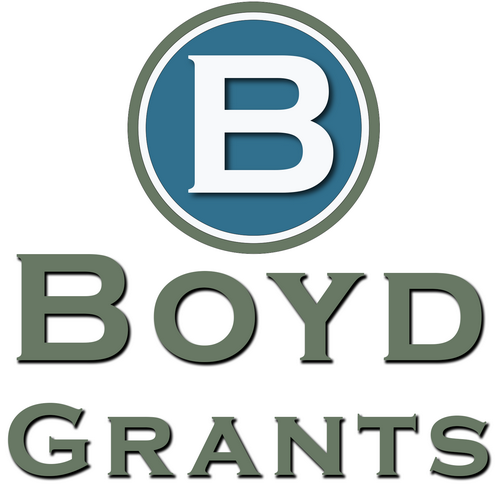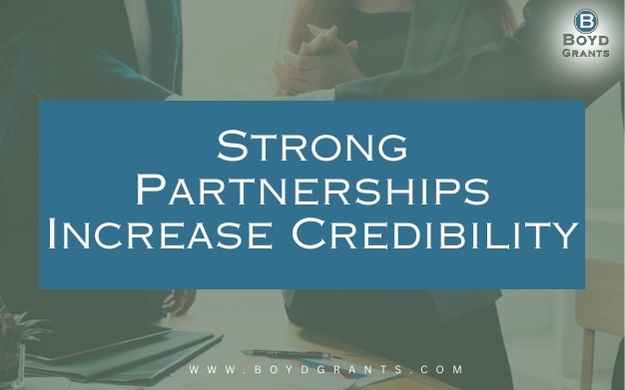Strong Partnerships Increase Credibility
When applying for grants, one of the most powerful ways to strengthen your proposal is by showcasing strong, collaborative partnerships. Funders are not just looking to invest in projects—they want to support initiatives that have broad community support and are built on a foundation of cooperation. A well-developed partnership shows funders that your project is not operating in isolation but has the backing of stakeholders who share responsibility for its success.
Why Partnerships Matter to Funders
Funders want to see that their investment will have far-reaching impact, and partnerships are a clear indicator that a project will reach its full potential. When you form meaningful collaborations, you demonstrate that your project is more than just a good idea—it has a solid support network that can help ensure its success and sustainability.
Here’s why funders value strong partnerships:
1. Demonstrates Community Buy-In
Community buy-in is crucial when it comes to the success of any program or initiative. A partnership signals that your project has been vetted by stakeholders who are already invested in the community’s needs. Whether it’s a local government agency, a school district, or a community organization, their involvement shows that the project isn’t just something that’s been imposed from the outside. Instead, it’s an initiative that’s rooted in the real needs of the community, with support from those who know the area best.
2. Shows a Shared Responsibility for Impact
When you partner with other organizations, you demonstrate that responsibility for the project doesn’t fall on a single entity. This shared responsibility is key to ensuring sustainability and long-term success. Funders are more likely to support projects that have a solid structure of accountability and that are supported by a range of partners who are committed to the program’s goals.
For example, if your program focuses on improving youth education, a partnership with local schools or educational nonprofits shows that there is a collective commitment to helping students succeed. It also provides a clear structure for how the project will be implemented, monitored, and evaluated—ensuring that there is a well-established plan in place from day one.
3. Amplifies Reach and Resources
The right partnerships bring more than just moral support; they also bring additional resources. Whether it’s funding, in-kind donations, or access to expertise, strong partnerships can help you expand your program’s reach. Funders love seeing how different entities collaborate to pool resources, both financial and otherwise. This synergy can result in a more robust, impactful program that can achieve far more than any one organization could on its own.
4. Increases Credibility
A partnership with respected organizations adds significant credibility to your project. If your proposal includes letters of support from trusted entities, such as local government officials, academic institutions, or healthcare providers, it strengthens your case in the eyes of funders. These partnerships lend weight to your proposal and show that other credible stakeholders are backing your initiative. It’s a sign that the project has been thoroughly vetted and that others are confident in its potential for success.
Examples of Strong Partnerships
Let’s take a look at a few examples of how different types of partnerships can enhance your proposal:
1. Letters of Support
A letter of support from a school district for a youth mentorship program can demonstrate that local education leaders are on board and see the value in the initiative. The letter signals that the district recognizes the program’s potential to support students and contribute to their academic success.
2. Memorandum of Understanding (MOU)
An MOU with a healthcare provider for a health outreach program could outline how your organization and the healthcare provider will work together to provide services to underserved communities. This formal agreement shows funders that you have a clear plan for collaboration and that both parties are committed to delivering tangible outcomes.
3. Collaborative Networks
Perhaps your proposal involves a network of community organizations working together to address a common issue, such as food insecurity. By demonstrating that you’re working with a coalition of local nonprofits, you show that there’s a broad base of support for the project, and the likelihood of long-term success is higher.
How to Build Strong Partnerships
Building strong partnerships takes time, but the benefits far outweigh the effort. Here are a few tips to help you cultivate valuable relationships:
- Start with shared goals: When approaching potential partners, ensure that their mission and goals align with your project’s objectives. A partnership is most effective when there is mutual benefit and shared vision.
- Build trust: Be transparent and open in your communications. Trust is the foundation of any successful partnership, so ensure that you’re clear about roles, responsibilities, and expectations from the start.
- Offer value: Partnerships should be mutually beneficial. Be sure to identify ways that your partners will benefit from the collaboration. Whether it’s increased visibility, access to new resources, or joint funding opportunities, make sure your partners see the value in the relationship.
- Formalize the partnership: Where appropriate, formalize your partnerships with MOUs or contracts. This ensures that expectations are clearly laid out and that all parties are on the same page.
The Bottom Line
Strong partnerships are more than just a nice addition to your grant proposal—they are often a deciding factor in whether you receive funding. By demonstrating community support, shared responsibility, and added credibility, you signal to funders that your project is well-positioned for success. Cultivating these relationships early on and ensuring that they are meaningful and mutually beneficial will not only strengthen your proposal but also set your project up for long-term success.
Remember, funders are looking to support initiatives that have a broad base of support. So, invest the time to build strong partnerships, and you’ll significantly increase your chances of securing funding.


Recent Comments